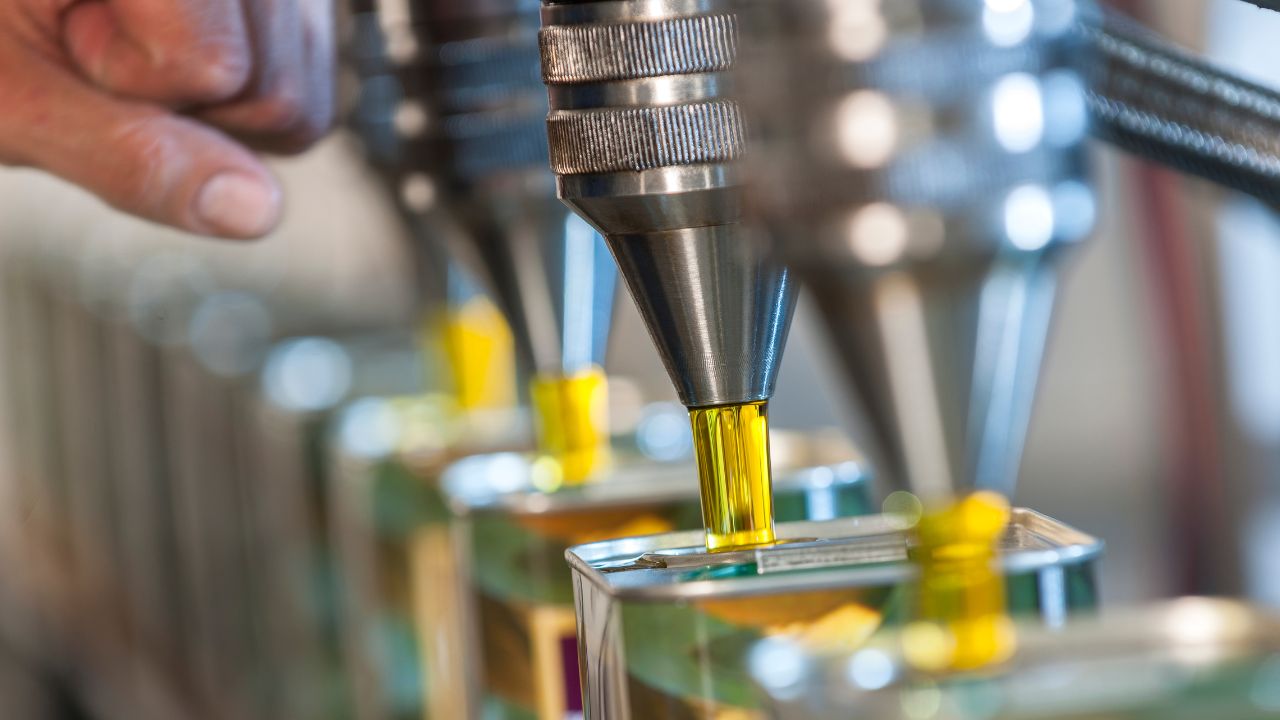Filling machines are essential in various industries, including food and beverage, pharmaceuticals, and cosmetics. However, the requirements for filling different types of liquids can vary significantly. This article explores the key differences between oil filling and water filling, highlighting the unique characteristics and considerations for each process.
Characteristics of Oil Filling
Oil filling involves dispensing various types of oils, such as cooking oil, essential oils, or lubricants. The filling process for oils presents specific challenges due to their unique properties.
Viscosity: Oils typically have a higher viscosity compared to water. This means that they flow differently and may require specialized filling equipment to ensure accurate dispensing. For instance, thicker oils may necessitate the use of piston fillers or gear pumps that can handle higher viscosity levels effectively.
Foaming: When filling oils, especially those that are aerated or have volatile components, foaming can be a significant issue. Foaming can lead to inaccurate fill levels and product waste. To mitigate this, oil filling machines often incorporate features such as anti-foaming nozzles or vacuum filling systems that minimize air entrapment during the filling process.
Temperature Sensitivity: Some oils may be sensitive to temperature changes, which can affect their viscosity and flow characteristics. Maintaining the appropriate temperature during the filling process is crucial to ensure consistent filling and product quality.
Characteristics of Water Filling
Water filling, on the other hand, involves dispensing various types of water, including still, sparkling, or flavored water. The filling process for water is generally more straightforward due to its lower viscosity and different handling requirements.
Low Viscosity: Water has a low viscosity, allowing it to flow easily through filling machines. This characteristic makes gravity filling methods suitable for water, as the liquid can be dispensed efficiently without the need for complex mechanisms.
Less Foaming: Water typically does not foam during the filling process, which simplifies the filling operation. However, sparkling water may require special considerations to prevent excessive carbonation loss during filling.
Temperature Control: While water is less sensitive to temperature changes compared to oils, maintaining a consistent temperature is still important, especially for flavored or carbonated waters. Temperature fluctuations can affect the taste and quality of the final product.
Equipment Differences
The equipment used for oil filling and water filling can differ significantly due to the unique properties of each liquid.
Filling Machines: Oil filling machines are often designed with features that accommodate higher viscosity and foaming issues. These machines may include piston fillers, gear pumps, or vacuum systems to ensure accurate dispensing. In contrast, water filling machines can utilize simpler gravity fillers or pressure fillers, which are more efficient for low-viscosity liquids.
Material Considerations: The materials used in the construction of filling machines may also vary. Oil filling machines often require components that can withstand the corrosive nature of certain oils, while water filling machines may prioritize materials that are easy to clean and sanitize.
Conclusion
Understanding the differences between oil filling and water filling is essential for manufacturers looking to optimize their production processes.
Each type of filling presents unique challenges and requires specific equipment and techniques to ensure accuracy and efficiency. By recognizing these differences, businesses can make informed decisions when selecting filling machines.
For those in need of reliable equipment, partnering with a reputable oil filling machine manufacturer can provide access to the right technology tailored to their specific needs. This ensures that both oil and water filling operations run smoothly, maintaining product quality and meeting consumer demands.


